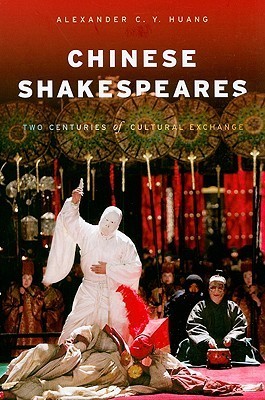
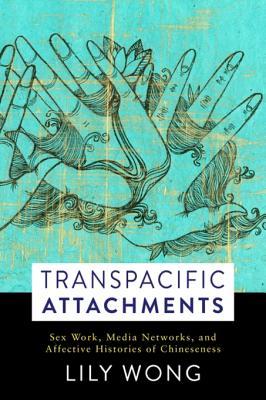
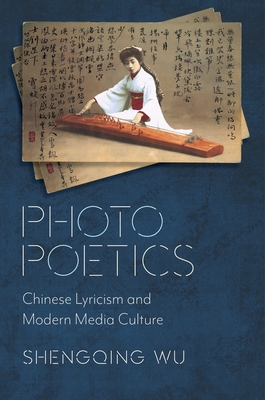
Global Chinese Culture
Series · 6 books · 2009-2022
Books in series

#3
Chinese Shakespeares
Two Centuries of Cultural Exchange
2009
For close to two hundred years, the ideas of Shakespeare have inspired incredible work in the literature, fiction, theater, and cinema of China, Taiwan, and Hong Kong. From the novels of Lao She and Lin Shu to Lu Xun's search for a Chinese "Shakespeare," and from Feng Xiaogang's martial arts films to labor camp memoirs, Soviet-Chinese theater, Chinese opera in Europe, and silent film, Shakespeare has been put to work in unexpected places, yielding a rich trove of transnational imagery and paradoxical citations in popular and political culture.
"Chinese Shakespeares" is the first book to concentrate on both Shakespearean performance and Shakespeare's appearance in Sinophone culture and their ambiguous relationship to the postcolonial question. Substantiated by case studies of major cultural events and texts from the first Opium War in 1839 to our times, "Chinese Shakespeares" theorizes competing visions of "China" and "Shakespeare" in the global cultural marketplace and challenges the logic of fidelity-based criticism and the myth of cultural exclusivity. In her critique of the locality and ideological investments of authenticity in nationalism, modernity, Marxism, and personal identities, Huang reveals the truly transformative power of Chinese Shakespeares.

#10
Transpacific Attachments
Sex Work, Media Networks, and Affective Histories of Chineseness
2018
The figure of the Chinese sex worker—who provokes both disdain and desire—has become a trope for both Asian American sexuality and Asian modernity. Lingering in the cultural imagination, sex workers link sexual and cultural marginality, and their tales clarify the boundaries of citizenship, nationalism, and internationalism. In Transpacific Attachments, Lily Wong studies the mobility and mobilization of the sex worker figure through transpacific media networks, illuminating the intersectional politics of racial, sexual, and class structures.
Transpacific Attachments examines shifting depictions of Chinese sex workers in popular media—from literature to film to new media—that have circulated within the United States, China, and Sinophone communities from the early twentieth century to the present. Wong explores Asian American writers' articulation of transnational belonging; early Hollywood's depiction of Chinese women as parasitic prostitutes and Chinese cinema's reframing the figure as a call for reform; Cold War-era use of prostitute and courtesan metaphors to question nationalist narratives and heteronormativity; and images of immigrant brides against the backdrop of neoliberalism and the flows of transnational capital. She focuses on the transpacific networks that reconfigure Chineseness, complicating a diasporic framework of cultural authenticity. While imaginations of a global community have long been mobilized through romantic, erotic, and gendered representations, Wong stresses the significant role sex work plays in the constant restructuring of social relations. "Chineseness," the figure of the sex worker shows, is an affective product as much as an ethnic or cultural signifier.

#11
Photo Poetics
Chinese Lyricism and Modern Media Culture
2020
Chinese poetry has a long history of interaction with the visual arts. Classical aesthetic thought held that painting, calligraphy, and poetry were cross-fertilizing and mutually enriching. What happened when the Chinese poetic tradition encountered photography, a transformative technology and presumably realistic medium that reshaped seeing and representing the world?
Shengqing Wu explores how the new medium of photography was transformed by Chinese aesthetic culture. She details the complex negotiations between poetry and photography in the late Qing and early Republican eras, examining the ways traditional textual forms collaborated with the new visual culture. Drawing on extensive archival research into illustrated magazines, poetry collections, and vintage photographs, Photo Poetics analyzes a wide range of practices and genres, including self-representation in portrait photography; gifts of inscribed photographs; mass-media circulation of images of beautiful women; and photography of ghosts, immortals, and imagined landscapes. Wu argues that the Chinese lyrical tradition provided rich resources for artistic creativity, self-expression, and embodied experience in the face of an increasingly technological and image-oriented society. An interdisciplinary study spanning literary studies, visual culture, and media history, Photo Poetics is an original account of media culture in early twentieth-century China and the formation of Chinese literary and visual modernities.
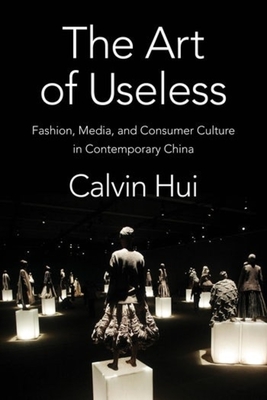
#12
The Art of Useless
Fashion, Media, and Consumer Culture in Contemporary China
2021
Since embarking on economic reforms in 1978, the People’s Republic of China has also undergone a sweeping cultural reorganization, from proletarian culture under Mao to middle-class consumer culture today. Under these circumstances, how has a Chinese middle class come into being, and how has consumerism become the dominant ideology of an avowedly socialist country? The Art of Useless offers an innovative way to understand China’s unprecedented political-economic, social, and cultural transformations, showing how consumer culture helps anticipate, produce, and shape a new middle-class subjectivity.
Examining changing representations of the production and consumption of fashion in documentaries and films, Calvin Hui traces how culture contributes to China’s changing social relations through the cultivation of new identities and sensibilities. He explores the commodity chain of fashion on a transnational scale, from production to consumption to disposal, as well as media portrayals of the intersections of clothing with class, gender, and ethnicity. Hui illuminates key cinematic narratives, such as a factory worker’s desire for a high-quality suit in the 1960s, an intellectual’s longing for fashionable clothes in the 1980s, and a white-collar woman’s craving for brand-name commodities in the 2000s. He considers how documentary films depict the undersides of consumption―exploited laborers who fantasize about the products they manufacture as well as the accumulation of waste and its disposal―revealing how global capitalism renders migrant factory workers, scavengers, and garbage invisible.
A highly interdisciplinary work that combines theoretical nuance with masterful close analyses, The Art of Useless is an innovative rethinking of the emergence of China’s middle-class consumer culture.
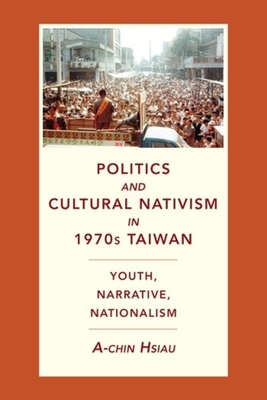
#13
Politics and Cultural Nativism in 1970s Taiwan
Youth, Narrative, Nationalism
2021
In the aftermath of 1949, Taiwan’s elites saw themselves as embodying China in exile both politically and culturally. The island―officially known as the Republic of China―was a temporary home to await the reconquest of the mainland. Taiwan, not the People’s Republic, represented China internationally until the early 1970s. Yet in recent decades Taiwan has increasingly come to see itself as a modern nation-state.
A-chin Hsiau traces the origins of Taiwanese national identity to the 1970s, when a surge of domestic dissent and youth activism transformed society, politics, and culture in ways that continue to be felt. After major diplomatic setbacks at the beginning of the 1970s posed a serious challenge to Kuomintang authoritarian rule, a younger generation without firsthand experience of life on the mainland began openly challenging the status quo. Hsiau examines how student activists, writers, and dissident researchers of Taiwanese anticolonial movements, despite accepting Chinese nationalist narratives, began to foreground Taiwan’s political and social past and present. Their activism, creative work, and historical explorations played pivotal roles in bringing to light and reshaping indigenous and national identities. In so doing, Hsiau contends, they laid the basis for Taiwanese nationalism and the eventual democratization of Taiwan.
Offering bracing new perspectives on nationalism, democratization, and identity in Taiwan, this book has significant implications spanning sociology, history, political science, and East Asian studies.
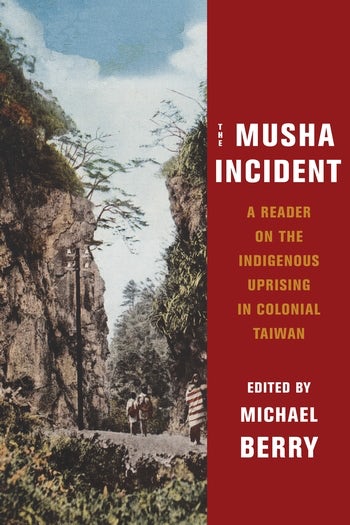
#14
The Musha Incident
A Reader on the Indigenous Uprising in Colonial Taiwan
2022
On October 27, 1930, members of six Taiwanese indigenous groups ambushed the Japanese attendees of an athletic competition at the Musha Elementary School, killing 134. The uprising came as a shock to Japanese colonial authorities, whose response was swift and brutal. Heavy artillery and battalions of troops assaulted the region, spraying a wide area with banned poison gas. The Seediq from Mhebu, who led the uprising, were brought to the brink of genocide.
Over the ensuing decades, the Musha Incident became seen as a central moment in Taiwan’s colonial history, and different political regimes and movements have seized on it for various purposes. Under the Japanese, it was used to attest to the “barbarity” of Taiwan’s indigenous tribes; the Nationalist regime cited the uprising as proof of the Taiwanese peoples’ heroism and solidarity with the Chinese in resisting the Japanese; and pro-independence groups in Taiwan have portrayed the Seediq people and their history as exemplars of Taiwan’s “authentic” cultural traditions, which stand apart from that of mainland China.
This book brings together leading scholars to provide new perspectives on one of the most traumatic episodes in Taiwan’s modern history and its fraught legacies. Contributors from a variety of disciplines revisit the Musha Incident and its afterlife in history, literature, film, art, and popular culture. They unravel the complexities surrounding it by confronting a history of exploitation, contradictions, and misunderstandings. The book also features conversations with influential cultural figures in Taiwan who have attempted to tell the story of the uprising.